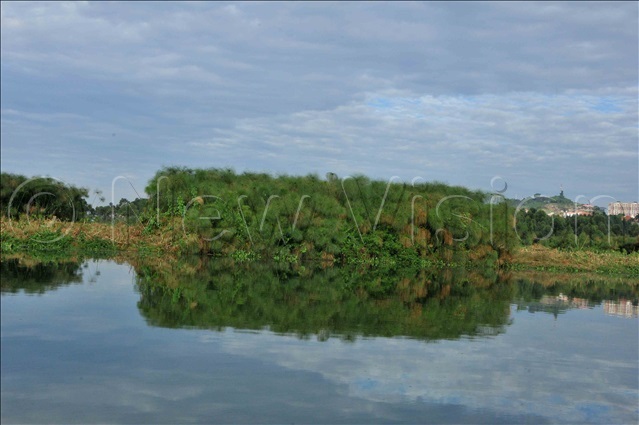Who allowed tycoons to build in Lake Victoria?
Not only are the tycoons destroying the most critical lakeshore wetlands but they are also building barricades in the lake.
Part of Hamis Kiggundu's home that was constructed on Lake Victoria. Photos by Karim Ssozi
LAKE VICTORIA ENVIRONMENT
Kampala tycoons are destroying wetlands that have been shielding Murchison Bay on the northern part of Lake Victoria to build palatial homes and leisure man-made beaches.
The destruction of the wetlands has resulted in massive pollution and silting of the lake.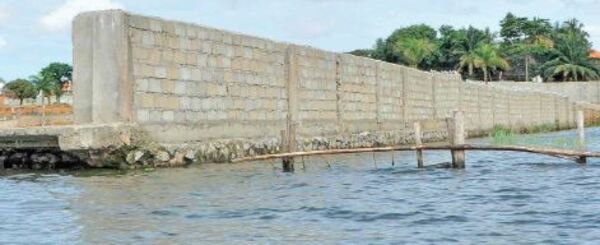
The perimeter wall of Dungu Resort on Lake Victoria's shores
Not only are the tycoons destroying the most critical lakeshore wetlands but they are also building barricades in the lake. The wetlands used to regulate the flow of water, thereby protecting the communities from floods. After the destruction of the wetlands, the rising levels of Lake Victoria are resulting in flooding at the landing sites within Murchison Bay.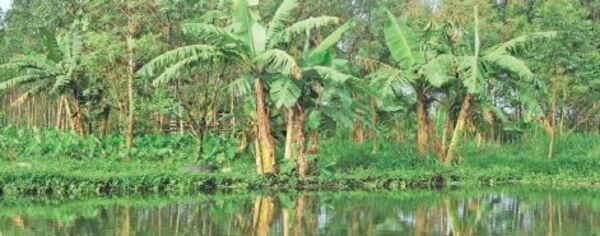
Vegetation has eaten into Lake Victoria
The floods have affected the landing sites and markets at Port Bell, also known as Luzira and Ggaba-Mulungu in Kampala. After destroying the wetlands, some of the tycoons move on further with the destruction by erecting offshore fences. A visit by the New Vision on Sunday encountered a barricade (wall) running for more than 100 metres offshore, into the lake.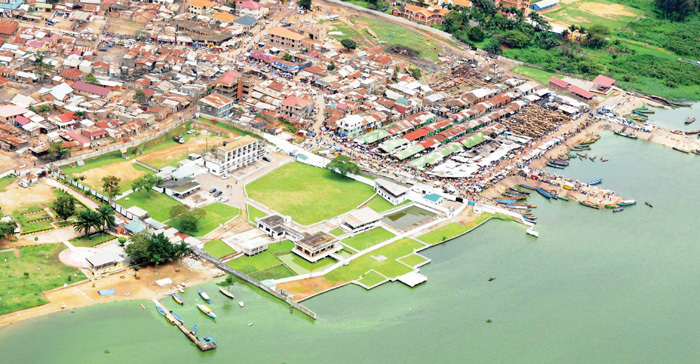
Buildings extending into the lake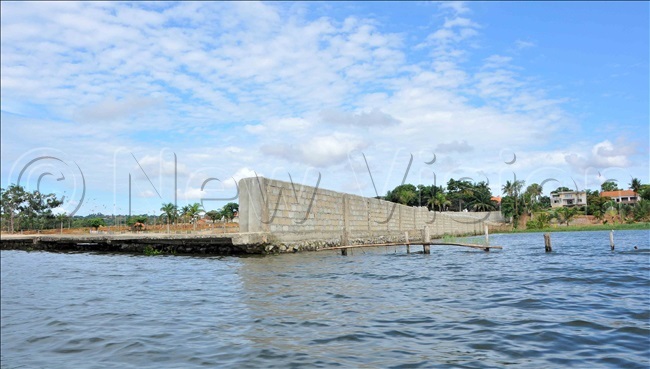
Part of a wall built in the lake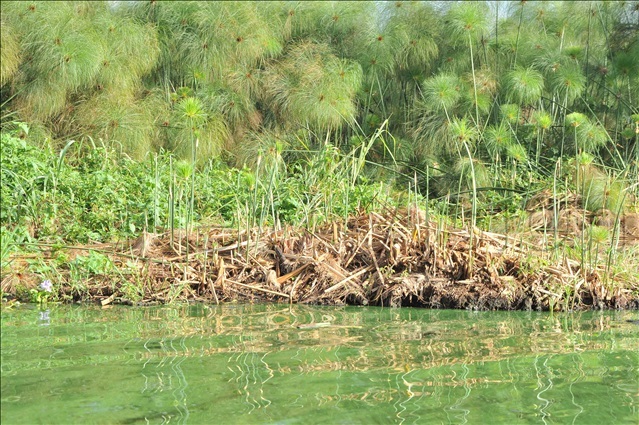

Part of the vegetation eating up the lake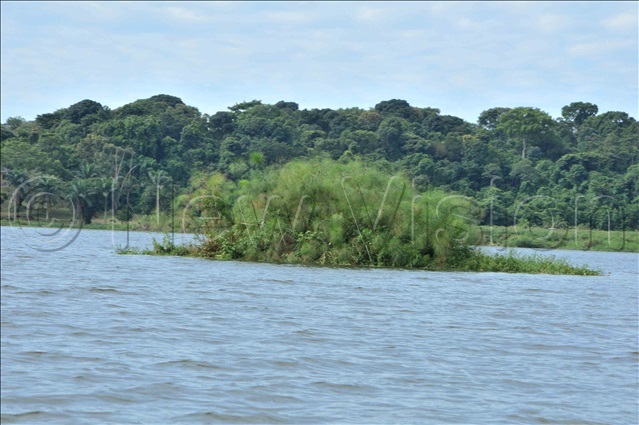
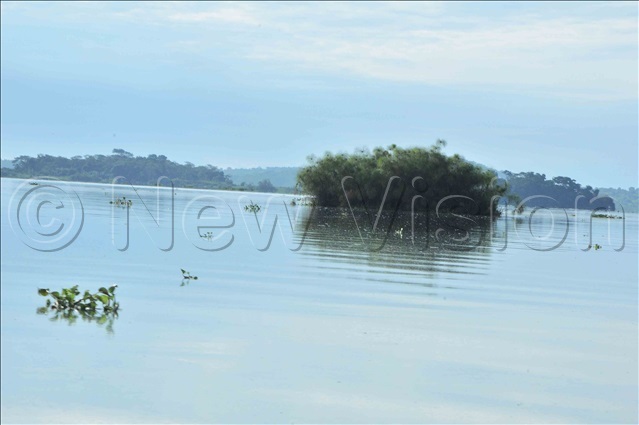
The water hyacinth has also invaded the lake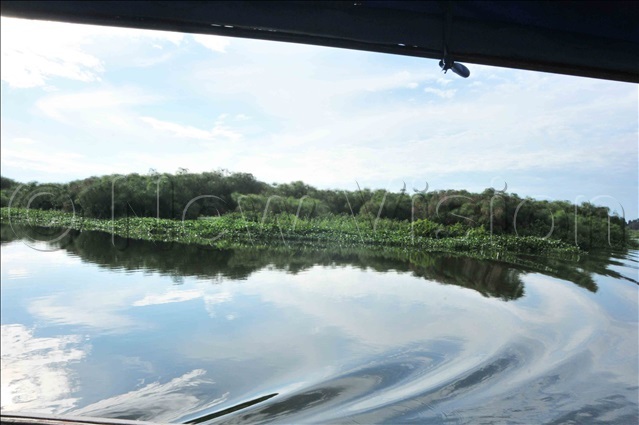
The fishermen who spoke to New Vision said a powerful tycoon, identified as Rogers Ddungu, had allegedly erected the concrete wall on the lake. "There was a large swamp that was cleared from this (Ddungu's Resort Beach) place," Godfrey Ssekabanja, the chairperson of the boat owners at Mulungu, said.
He added that the swamp was cleared before the wall was erected. In addition, the local communities say that there was a huge rock of cultural significance, which was demolished by the people who cleared the wetland. "The stone was revered because Ssekabaka Mwanga used to pay homage at the site," Ssekabanja said.
"I have been a fisherman all my life at Mulungu and I have not seen such massive destruction of the lake. The rich men do not care about the environment because of impunity," he added. Mulungu village defence secretary Henry Mutebi concurs. "How can a few rich people destroy the environment on which many people depend? Where is the National Environment Management Authority (NEMA) in all this?" he asked.
Authorities silent Mutebi added that they contacted several officials in Government, including NEMA and the Ministry of Water and Environment, but no action has been taken to stop the destruction of the wetlands and the lake. He also said the destruction started way back when property mogul Sudhir Ruparelia cleared the wetlands to build Speke Resort Munyonyo and a marina.
The other tycoons in the neighbourhood also followed suit. The destruction at Ggaba- Mulungu is replicated at Ggaba-Kawuku, where tycoons, including Hamis Kiggundu, have constructed mansions in areas that used to be wetlands.
Initially, Sylvia Owor, a businesswoman, tried to build a residence in the area and was blocked by NEMA. The land was apparently acquired by another more influential tycoon, Kiggundu who cleared the wetland and put up a palatial mansion that directly touches the lake. Kiggundu's residence, New Vision has learnt, is protected by armed guards and police.
Access to the place is highly restricted. A stone's throw away is a floating island, which fishermen estimate to be one square kilometre, which broke off from a larger part of the remaining Nakivubo wetland. A man in tattered clothes is seen apparently watching over the place. He appeared restless over the intrusion created by New Vision's team. At Ggaba landing site, KK Beach which also stretched and encroached on the lake was also flooded, according to Dirisa Walusimbi.
Regulations
The regulations on river banks and lakeshores do not allow anybody to construct houses within 200 metres of a big lake, such as Victoria. The regulations also prohibit construction within 100 meters of a big river. For small lakes, the protection zone for a lake is 100 metres while for a small river it is 50 metres.
Destructive crew According to Peter Serujja, a resident of Ggaba landing site, the tycoons hire youth from the landing sites, who descend on the swamps and shred the papyrus to create water channels. After creating channels around a chunk of the swamp, they leave it and, subsequently, the winds blow it away like a floating island.
The induced floating island then drifts away into the open waters of Lake Victoria. On the face of it, it appears as if it is a natural floating island, locally known as ekisamba, according to Serujja. These induced floating islands have been a hazard to the fishing communities because they block access to the lake from the landing sites, which affects travellers and fishermen and paralyse business.
Civil society
According to Richard Kimbowa, the chief executive officer of the Uganda Coalition for Sustainable Development, what is going on at Lake Victoria "is another failure for those who are mandated. They have failed to do their work. They should carry out a lot of surveillance. The wetlands should be left to do their work and they should be stuffed with concrete".
"Currently, NEMA is not doing its work. How can the media get to the ground before them? They should be having information about what is happening on their fingertips. If they do not know what is in Kampala, how will they know what is in Karamoja?" Kimbowa wondered. NEMA speaks out Dr Tom Okurut, the executive director of NEMA, said impunity among the population is on the rise.
He also pointed out that people often disregard the law on the environment during election periods. "People tend to go back to what they used to do when campaigns are approaching, but we will not allow them to go back to the wetlands," said Okurut. He said he was on leave and referred New Vision to Christine Akello, the deputy executive director of NEMA, for further details.
Akello said the lake is important and added that NEMA is was very interested in the matter. "The walls which have been erected in the lake should be removed," she told New Vision but also referred New Vision to Arnold Waiswa Ayazika, the director in charge of environmental Monitoring and Compliance.
"They (Ddungu Resort) submitted a report but we have not given them a permit to continue construction," Waiswa Ayazika said. "I am going to send a team and establish what is taking place on the ground," he added. Concerning the construction of a palatial mansion on the plot previously owned by Owor, Ayazika said he was going to check his records and establish whether the current owner (Kiggundu) has a permit or not.
He added that he was going to send a team on a fact-finding mission to Murchison Bay today.
Study findings
A recent study revealed that Lake Victoria is heavily polluted, with high traces of dangerous minerals. The study, conducted by researchers from the Texas Southern University in Houston, in the US, and Makerere University, has frightening revelations about the lake's future.
The ‘Assessing the Landscape Ecological Changes of Murchison Bay, Lake Victoria Using Satellite Imagery' study relied on analysis of water samples and satellite data to track changes. Water samples collected from three separate locations around the lake show that it contains high levels of lead, arsenic, aluminium and phosphorous, which are unsafe beyond certain limits.
According to the study, high nutrient and metal concentrations were recorded from samples obtained from Miami, Ggaba and Mulungu beaches along Murchison Bay. Dr Anthony Gidudu, a lecturer at Makerere University's department of geomatics and land Management, said the study was still ongoing.